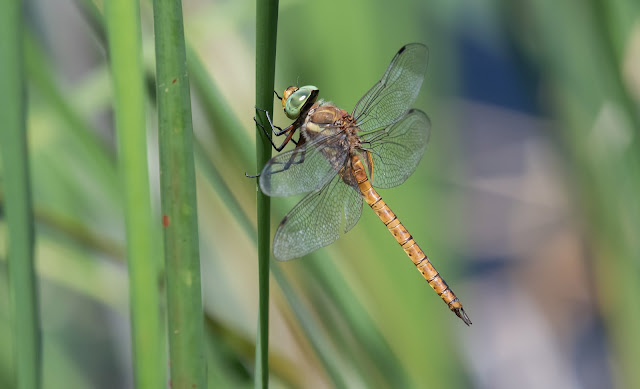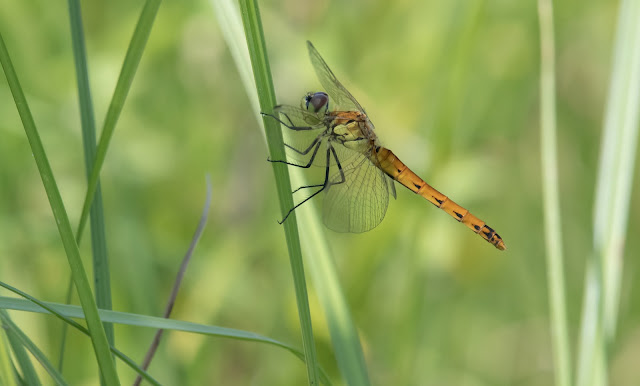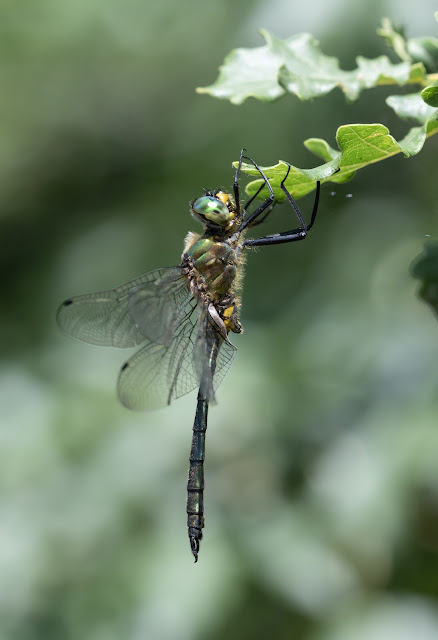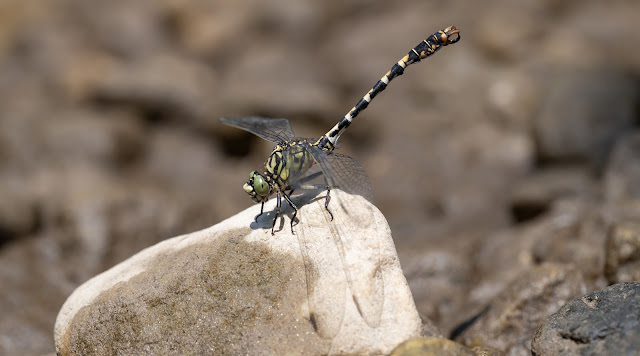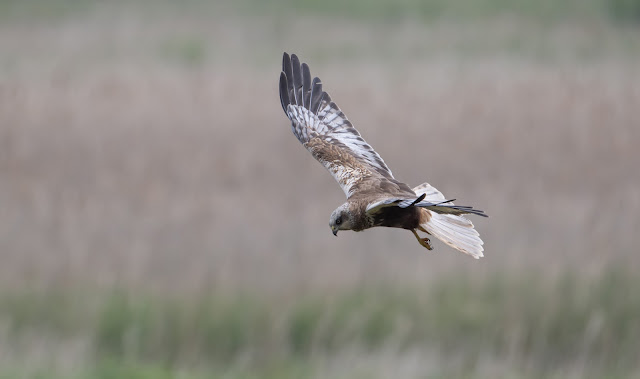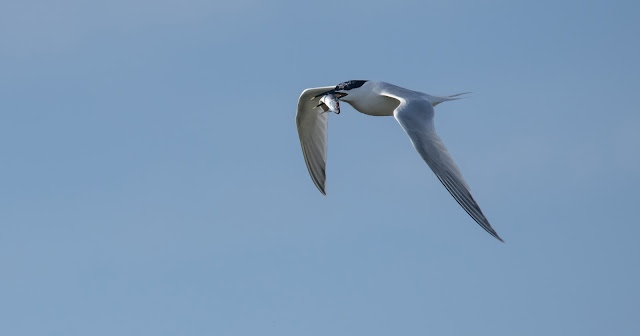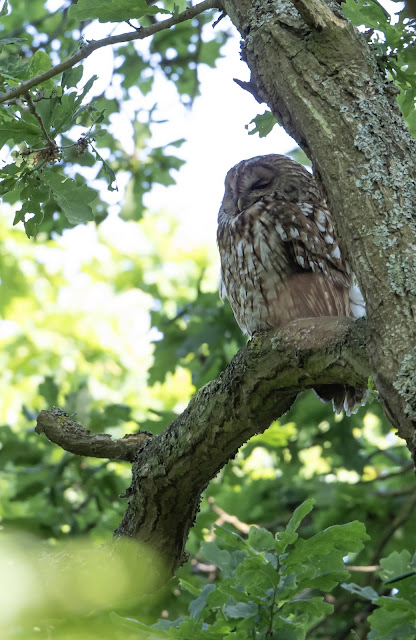Followers
Tuesday, 29 July 2025
The Damselflies of Bulgaria.
Saturday, 26 July 2025
Bulgaria Dragonflies.
A few weeks ago I was invited to co-lead a tour searching for the dragonflies of Bulgaria. Matt and I had been to Bulgaria in 2018, although that trip was mainly looking for butterflies, so with little knowledge of the Bulgarian dragonflies I bought the excellent Wildguide book on the subject and quickly learnt as much as I could. Fortunately for me, the other guide was Bulgarian, and he knew the species extremely well, but I still wanted to know as much as I could.
The tour of 9 days ended up to be extremely successful and some 53 odonata species were seen in total. So many in fact that I am having to break the posts into several, as there was just simply too much for one blog post.
As well as the dragonflies, we also saw over 90 butterfly species, which seems absolutely crazy. Normally when I'm leading a tour I take very few photos, but as I didn't have the stress of driving, as well as it being a smaller than usual group, I ended up taking lots of images.
In all the tours I've been involved in, I think this was probably the best of them, despite it being extremely hot for some of the trip, with 4 days hitting 40 degrees!!
To give us the best chance to see most of the main target species we visited 5 different hotels in the country, and one day we visited Lake Kerkini in Greece, to hopefully see the incredible Bladetail dragonfly.
Many of the species we saw can be seen in the UK, but here, most of them have different names, so I will label those photos with the European names and the English name in brackets.
DRAGONFLIES.
Male Small Pincertail.
Female Small Pincertail.
The Small Pincertail is quite a common species in Bulgaria, but also an amazing looking creature. Who would want to be a female of this species, being held in place during mating by the claw type appendages!!
Bulgarian Emerald.
The above Emerald was towards the end of it's flight season, and some of the identifying marks had vanished, so it was a difficult one to identify. Eventually Dansko decided it had to be the Bulgarian after studying it for some time, and eliminating the other possible species.
Southern Skimmer.
The Southern Skimmer, along with plenty of Black-tailed, White-tailed and Keeled Skimmers were seen throughout the trip in good numbers.
Monday, 21 July 2025
Minsmere Bittern.
On our way home from Norfolk, we called into Minsmere RSPB reserve. Although it was slightly out of the way, the diversion was well worth trying. It was a reserve that both Lisa and I had only visited once before, although not together as both visits were long before we had met.
I had seen a post a few weeks before that concerned a certain Bittern at the reserve that had been seen at quite close quarters a few times. It was certainly worth a punt as neither of us had seen Bitterns particularly close before.
Once we were in the hide where we thought we had the best chance of a Bittern, we had a long wait, seeing a few Marsh Harriers flying past, along with some fleeting views of Bearded Tits. However, there was not a hint of a Bittern. One couple had sat at one of the windows for all the time we had been in the hide, and as it was really the window we had hoped to view from it was a little frustrating we couldn't view from there. However, all was forgiven when after 90 minutes or so, the couple called us over as a Bittern was walking across the ditch just below the window. As I had a 600mm and Lisa had a 500mm lens on, it was actually far too powerful for the Bittern. I could only just fit the head and shoulder in the image. Lisa was even worse off as her lens was on the wrong setting and she couldn't focus on the bird at all!!
Bittern.
Fortunately, I had planned for such an event and I had also taken my lightweight 300mm lens as well. So I very quickly went to my bag and grabbed the smaller lens and changed over. However, in those few moments the bird had wandered back into the reedbed. We saw it through the reeds as it moved down the ditch below us, where it soon reappeared and then stood very still as it hunted the small fish in the water. I was soon taking more photos as it hunted.
Marsh Harrier.
Unfortunately, the hide was quite busy with many people watching the birds, but as ever, some people didn't seem to realise that although they were hidden by sight from the birds, they still had to keep quiet. In the end, both of us got slightly fed up with all the noisy chatter, and we moved on. It was now getting quite late in the day, but we didn't fancy hitting the M25 in the rush hour, so we decided to have a long walk around the coastal part of the reserve. Here we enjoyed seeing many Sandwich Terns flying in with small fish for their chicks.
Sandwich Tern.
By the time we eventually returned to the carpark, the visitor centre had closed for the day. Earlier in the day, we had seen a Tawny Owl in the woodland track between the visitor centre and the hides, and on our return, we saw it again in a different spot. We both managed a few images of this rarely seen bird. It brought a fitting end to our very successful trip to Norfolk and Suffolk.
Tawny Owl.
Sunday, 6 July 2025
Swallowtail Success.
With the weather looking a bit tough for butterfly hunting, it came down to a bit of a gamble for the final butterfly needed for Lisa to complete the British list. However, it was a case of having to go now if she was going to complete it this year, as her holiday from work was coming to an end, as well as myself having a few commitments in the following few weeks.
To give us our best chance, we decided to book extra days away, and by leaving early on day one, we would actually have nearly 4 days of possible Swallowtail hunting, with the final day possible if needed, although a trip to Minsmere on the way home was what we really wanted.
Leaving Seaford on the Sunday morning, we were soon well ahead and we decided to call into Weeting Heath on the way up, to hopefully see Stone Curlew. This site is one of the easiest to see these secretive birds, although we really did struggle to see one together!! The first one eventually showed when Lisa had decided to head back to the car to collect something. By the time she was back the bird had vanished. I then went back to the car to get the lunch, only to find when I got back that the bird had showed again. Eventually we both managed to see it together, although it was extremely distant.
Totally different to my first ever visit to this reserve way back in 2005, when Matt and Pen was with me. On that occasion we all saw our first ever Stone Curlews. The photo below was taken on an old compact digital through the spotting scope.
Stone Curlew from 2005.
Following this. well, sort of success, we continued on our journey, arriving in a small village called Freethorpe, which was only 15 minutes or so from Strumpshaw Fen. This was to be our base until the Thursday morning. As the sun was actually shining, we decided to nip over to Strumpshaw, just to get our bearings. It had been a few years since I had last been to the reserve. After a short walk up the lane, past the famous doctor's garden, where sightings of the Swallowtail are quite frequent, we eventually went back to the visitor centre. Although by now it was closed, at least we could check out the sightings board. As we went to the viewpoint by the centre, we had passed a young lady that was busy photographing something in the garden. As she was obviously concentrating, we ignored her, well, that was until a couple more people showed interest in what she was up to. It then became evident that she was busy with a Swallowtail that was nectaring in the small garden plot. Lisa soon started taking many photos of the butterfly that had completed her target. However, after the butterfly eventually flew into the reedbed to roost, I asked her if she was excited about seeing the Swallowtail, and she agreed with me, that it wasn't quite how she was hoping to see it, with someone else having found it, and the fact it was in the garden with heavily scented flowers, it all felt a little artificial.
However, at least the pressure was off, as she had seen one, so if the rain fell for the rest of the week we could still head home successful.
The following day, we headed back to Strumpshaw. Walking past the garden plot, we expected to see the butterfly back there, but it was nowhere to be seen. After checking into the visitor centre we casually checked it out again, and started chatting to a delightful couple, who were on the same quest. After chatting for some time we started to go our separate ways, with Lisa mentioning how odd it would be if a Swallowtail was feeding on other more natural plants near the water, when a Swallowtail flew up in front of her. This was a bit more like what we had hoped for. We spent some time with this individual, and then another that joined it. How lovely to get 2 Swallowtails performing for us.
Swallowtail.
We then retraced our steps from the previous evening, seeing many insects of all kinds, lots of Sedge Warblers that were busy feeding chicks. We also stopped to check on some Garlic Mustard seed-heads, finding a few Orange-tip larvae. We also then had a Swallowtail fly over us way out in the reed-beds.
I was particularly pleased to find some Golden-bloomed Grey Longhorn beetles, a species I had only seen in books before.
Golden-bloomed Grey Longhorn.
The rest of the day was spent at Strumpshaw. The butterfly that was the most surprising, was the Small Tortoiseshell, a species that has become quite scarce over much of Britain in recent years, but here, especially along the River Yare, they were very numerous. It was like the good old days when the Small Tortoiseshell was a very common species. There must be something about this area, as the last time I saw these sort of numbers of them, it was in the same area back in 2013. Fortunately, the RSPB that own the reserve let the nettles grow in profusion along the riverbank, and it obviously pays off.
Small Tortoiseshell.
We also had views of Bittern and Hobby, masses of hirundines and Swift and many dragonflies. The diversity was much greater than back in Sussex. Obviously insects are doing much better in the less crowded areas of Norfolk.
This was a much more satisfying day, with the Swallowtail sighting being more pleasing. However, we still hoped to see many more before we headed home.
The following day, we changed the scenery for some heathland, and the possibility of Silver-studded Blue. We headed to Buxton Heath, which was around 50 minutes away. It wasn't long before we were watching large numbers of these lovely blues. The first one was immediately followed by a new emergence, with a male Silver-studded Blue, complete with attendant ants. I have only seen this a few times, and it's always fascinating watching the ants working around the butterfly, totally unaware they are looking after a butterfly. How wonderful and strange nature can be!!

















